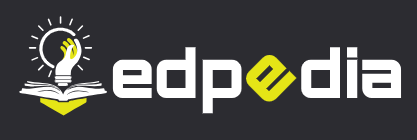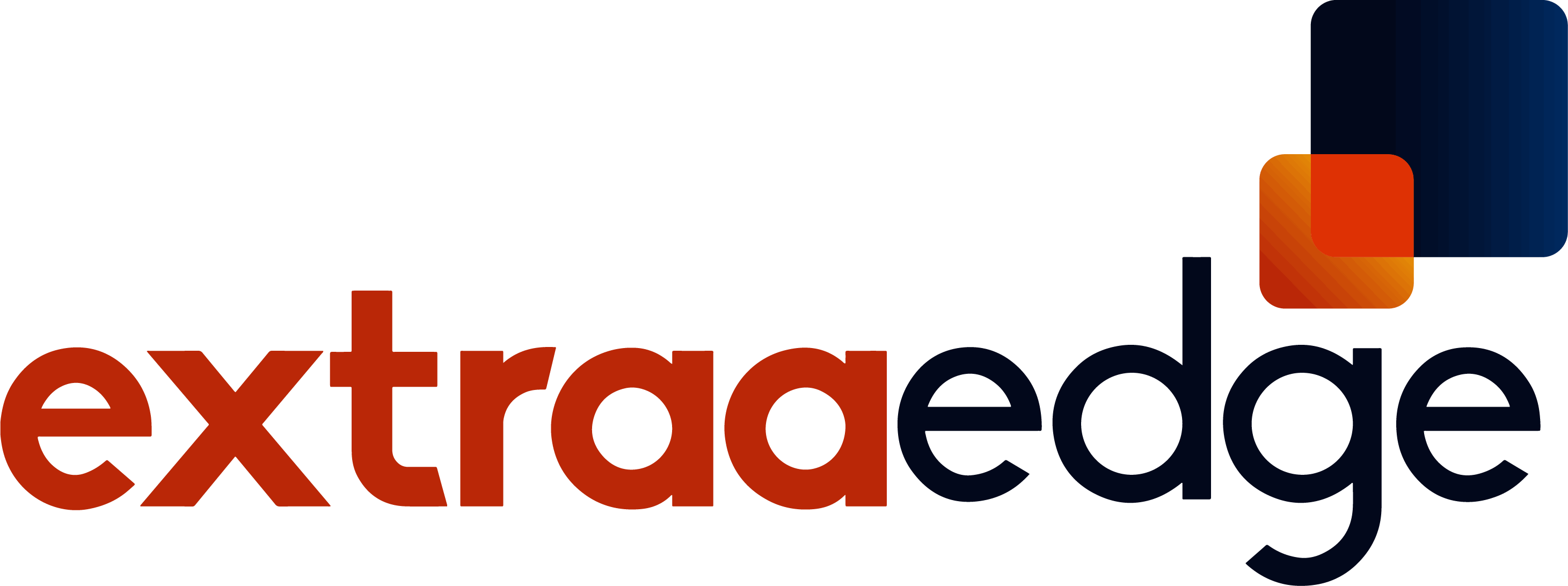What Is Higher Education Software?
Higher Education Software encompasses a wide range of computer programs and technologies developed expressly for use by educational institutions, faculty members, and students in the higher education sector. These software solutions aim to improve a variety of academic procedures, including student management, course delivery, instructional support, and administrative chores.
Higher Education Software's major goal is to improve students' overall learning experiences. These tools provide features such as online course materials, interactive learning modules, virtual classrooms, and learning analytics, all of which contribute to an engaging and dynamic learning environment. Higher Education Software has become increasingly important in allowing remote education and providing access to educational resources at all times and from any location.
Higher Education Software not only supports student learning, but also helps faculty members manage and organize their courses. These tools enable digital platforms for creating course content, generating assignments and evaluations, and providing feedback to students. They also allow teachers to assess student progress, evaluate data, and customize their teaching approaches to meet the unique requirements of their students.
Higher Education Software helps educational institutions streamline administrative chores, making processes more efficient and saving time and money. This program has functions including student information systems, human resource management, financial management, and donor management. These tools enable schools to automate operations such as student enrollment, grading, payroll processing, and fundraising, letting them to focus on their primary objective of providing high-quality education.
Investing in Higher Education Software can significantly improve an educational institution's success. It can help with student retention, instructor effectiveness, and administrative costs. Before making a purchase, it is critical to determine an institution's specific objectives and priorities and then analyze the solutions that provide the best fit. Furthermore, it is critical to examine the software provider's reputation and reliability, as well as guarantee that the program interacts seamlessly with existing systems.
What Are The Recent Trends In Higher Education Software?
Higher education software has evolved significantly in recent years, both to technological developments and a rising emphasis on data-driven decision making. As the desire for more efficient and effective instructional tools grows, the higher education software market has seen some noticeable shifts.
We'll look at the most recent trends in higher education software that every potential purchase should know about.
1. The Rise Of Cloud-Based Solutions: Cloud-based solutions are gaining popularity in the higher education business, giving institutions with the flexibility and scalability they seek. These technologies enable universities and colleges to store and access data, collaborate, and operate remotely, minimizing the requirement for physical servers and on-site IT infrastructure. Furthermore, because cloud-based solutions frequently use subscription-based pricing models, they are a less expensive option to traditional software.
2. AI And Machine Learning (ML): Artificial intelligence and machine learning are altering how higher education software works. AI and machine learning are being utilized to tailor learning experiences, boost student engagement, and predict student outcomes through advanced algorithms and data analytics. These technologies are also being utilized to automate administrative work, giving professors more time to focus on teaching and research.
3. Mobile Learning: As more students use smartphones and tablets to access information, higher education software suppliers are promoting mobile-friendly offerings. This trend has created new options for students to access course materials, engage in online discussions, and complete assignments while on the go. It also enables more seamless integration of in-class and out-of-class learning.
4. Big Data & Analytics: Big data and analytics have become critical components of higher education software. Institutions may now collect massive volumes of data on student performance, behavior, and engagement, then utilize analytics tools to evaluate and make informed decisions. This enables a more individualized learning experience, increased student retention, and better strategic planning for institutions.
5. Collaborative Learning Spaces: Collaborative learning spaces are converting traditional classrooms into dynamic and participatory venues. Higher education software suppliers are introducing virtual classrooms, discussion boards, and chat tools to help students collaborate and work together. This trend has proven especially useful during the COVID-19 epidemic, when remote learning has become the new standard.
Benefits Of Using Higher Education Software
Higher education software encompasses a wide range of digital tools and platforms built expressly for use in academic settings. Higher education software is offered in a variety of formats, including learning management systems and student information systems. Why should institutions invest in these software solutions?
Here are the advantages of adopting higher education software and how to make an informed decision for your institution's needs.
1. Improved Efficiency: One of the primary advantages of higher education software is its ability to boost efficiency in a variety of administrative and academic responsibilities. These software platforms, which include automatic grading, online registration, and student information management, can help instructors and staff save time and minimize their workload.
2. Seamless Collaboration: Communication is essential in any academic context, and higher education software allows for seamless collaboration at all levels. These software solutions promote successful communication between students and faculty, as well as across different departments within the university, by providing multiple channels such as messaging, discussion forums, and video conferencing.
3. Enhanced Teaching And Learning: Many higher education software solutions include capabilities that improve the teaching and learning experience. For example, learning management systems include a number of tools for course construction, material delivery, and evaluation, making it easier for instructors to create engaging and interactive courses. Similarly, students can access course materials, submit assignments, and receive feedback in an easy-to-use digital environment.
4. Data-Driven Decision Making: Higher education software captures and saves large amounts of data, which may be used to make data-driven decisions. This data, which may be used to track student performance and attendance as well as monitor institutional goals and progress, can provide insights that assist institutions improve their procedures and strategies.
5. Increased Accessibility And Flexibility: As technology advances, higher education software has become more accessible and versatile, adjusting to students' and faculty's changing demands. These software solutions offer remote learning, mobile access, and diverse learning styles, allowing students to access instructional content at any time and from any location.
Important Factors To Consider While Purchasing Higher Education Software?
When it comes to choosing higher education software, there are numerous key elements to consider to ensure that you make an informed purchase.
This buyer's guide will lead you through the essential things to consider when comparing different options for higher education software.
1. User-Friendly Interface: When selecting higher education software, one of the most important factors to consider is its ease of use. This means that the program should have a simple and user-friendly interface that students, staff, and administrators can utilize. A complex or cluttered interface might slow adoption and make it difficult to use the product successfully.
2. Comprehensive Features: Different higher education software will have different features, therefore it is critical to understand your institution's requirements and select software that has comprehensive features to suit those requirements. Look for services like enrollment management, student data management, online learning, and analytics to ensure that all of your needs are satisfied.
3. Integration With Existing Systems: Another important consideration is the program's capacity to integrate with your organization's existing systems and software. This eliminates the need for redundant data entry and streamlines operations, saving time and effort for both students and staff.
4. Scalability: When choosing higher education software, examine its scalability. As your school grows, the software should be able to handle an increasing number of students and users without causing performance concerns or requiring further investments.
5. Data Security: Because sensitive information on students and instructors is stored on the software, data security should be a major emphasis. To protect your institution's information, ensure that the software includes appropriate security features such as data encryption, access controls, and regular data backups.
6. Training And Support: It is critical to assess the amount of training and support offered by the software vendor. Make sure they give training sessions for your employees to become acquainted with the software's functionality, as well as timely and dependable help in the event of a technical problem.
7. Priced: While it may be tempting to choose a lower-priced alternative, it is critical to analyze the whole cost of ownership, which includes initial payments, regular maintenance fees, and any additional charges. A more expensive but comprehensive program may prove to be a superior long-term investment, thus all associated costs must be considered. When selecting higher education software, consider these considerations to make an informed decision and select a solution that suits your institution's specific needs and goals.
What Are The Key Features To Look For In Higher Education Software?
When investing in higher education software, it is critical to thoroughly analyze the numerous options available and select the one that best meets the needs of your institution.
To ensure a successful installation and long-term benefits, consider the following critical elements in higher education software:
1. Scalability: Higher education institutions are always evolving, and the software you choose should be adaptable to your organization's changing needs. Look for software that can scale to support growth and add new features as your organization grows.
2. Integration: Your software should be able to work seamlessly with your current systems and processes. This reduces time and effort in data transfer while also ensuring a smooth transition for staff and students.
3. Customization: Because higher education institutions have distinct workflows and requirements, it is critical to select software that is easily customizable to match your individual demands. This ensures that the program adapts to your institution, not the other way around.
4. User-Friendly Interface: The software's interface should be straightforward and intuitive for administrators, instructors, and students to use. This saves time and eliminates the need for significant training, making it easier to implement the new system.
5. Robust Features: Look for software that includes features built expressly for higher education, such as student information management, course scheduling, and online learning resources. Make sure you understand the features featured and how they relate to your institution's aims.
6. Data Security And Privacy: Given the growing importance of protecting student data, it is critical to select software with strong security mechanisms in place. Check for features like data encryption, access control, and frequent security updates to ensure critical information is secure.
7. Mobile-Friendly: Because today's students are always on their devices, it is critical to select software that is mobile-friendly. This will enable students to obtain critical information on the go and improve the overall user experience.
8. Support And Training: When bringing new software to your organization, you must have access to support and training resources. Look for software companies that provide training classes and have a dedicated support team to help with any problems that may arise.
9. Cost: Higher education software can be a major investment, therefore it is critical to analyze the total cost of ownership. Consider both the initial purchase price and any continuing maintenance or subscription fees. By taking these major aspects into account, you can make an informed decision about which higher education software is best for your institution.
Why Do Businesses Need Higher Education Software?
Businesses require Higher Education Software for a variety of reasons. To begin, this type of software is specifically intended to meet the needs of educational institutions, making it an excellent investment for education-related enterprises. It provides a comprehensive platform for managing and organizing all areas of higher education, including student records, course materials, grades, financial aid, and more.
Second, Higher Education Software enables firms to increase their efficiency and productivity. This software, which includes features such as automated workflows, centralized data management, and real-time reporting, allows firms to optimize their processes and save time and effort on administrative activities. This not only saves vital resources, but also allows them to devote more time to key activities like teaching and research.
Additionally, Higher Education Software enables businesses to improve their communication and collaboration with students, instructors, and staff. Businesses can enable smooth communication and cooperation across geographical boundaries using solutions such as web portals, chat systems, and virtual classrooms. This can result in a more active and connected community within the institution.
Furthermore, Higher Education Software offers data-driven insights and analytics, enabling businesses to make informed decisions and find areas for improvement. This can help firms remain competitive in the ever-changing education industry while also adapting to changing market trends and student demands.
How Much Time Is Required To Implement Higher Education Software?
The time required to implement higher education software varies based on the specific program being used and the complexity of the institution's requirements. The implementation procedure can last anything from a few weeks to many months. The size of the institution is an important consideration in determining the implementation timeline.
Larger universities with more departments and systems to integrate may need a longer implementation period than smaller colleges. Another crucial issue is the degree of customisation required for the software. Off-the-shelf solutions may take less time to implement than custom or bespoke software, which takes more development and testing.
Furthermore, it is critical to examine the institution's staff's preparation and involvement in the implementation process. Collaborating closely with the software vendor and actively participating in the implementation process can help to accelerate the timetable. Proper employee training and onboarding are also critical to ensure a successful and easy rollout.
This can take anywhere from a few days to many weeks, depending on the software's complexity and versatility. In some circumstances, data may need to be cleaned and organized before being moved to the new platform. This data preparation process can have an impact on the total timetable for deployment. To achieve timely implementation, institutions must thoroughly discuss and plan with the software vendor before beginning the implementation process. This can help to maintain reasonable expectations and reduce delays.
What Is The Level Of Customization Available In Higher Education Software?
Higher education software allows for varying amounts of customisation based on the software and its features. In this context, customization refers to users' capacity to change and adjust software to their individual needs and requirements. At the most basic level, most higher education software supports some level of customisation via user preferences.
This could include changing the structure and design of the software, configuring notifications and reminders, or deciding which features to show on the main panel. Some higher education software may also allow for more complex customization possibilities, such as adding new fields, creating custom forms and surveys, and integrating with other systems and apps.
This level of flexibility is excellent for organizations with unique workflows and data needs. Higher education organizations seeking a highly personalized solution might also choose software that allows for substantial customization through bespoke coding and development. This enables totally customizable features and integrations that are especially tailored to the institution's requirements.
When selecting a higher education software, customers should carefully analyze their individual demands and requirements, as well as comparing the level of customization provided by various solutions. This ensures that the software chosen actually matches the institution's requirements and provides a seamless and efficient user experience.
Which Industries Can Benefit The Most From Higher Education Software?
Higher education software is a useful tool for institutions and organizations who want to streamline and improve their educational processes. This technology not only meets the needs of students and instructors, but it also provides useful solutions for administrators and employees. Its diverse features can be tailored to the individual needs of different sectors, making it useful in a variety of fields.
The healthcare business can profit immensely from higher education software. With an increasing need for healthcare workers and ongoing changes in medical technology and laws, healthcare firms must provide efficient and effective employee training programs. Higher education software enables thorough training and evaluation, allowing healthcare personnel to stay current with the newest innovations in their sector.
It also helps to develop and maintain standardized processes and procedures, which ensures quality and consistency in patient care. Higher education software can be used by corporations to train and improve their employees. With the rapid evolution of technology and movements in the global market, it is critical for businesses to regularly upgrade their employees' skills and expertise.
Higher education software allows you to create and manage training programs, measure progress, and conduct evaluations, all of which improve your company's overall performance and efficiency. Higher education software can potentially provide significant benefits to the government. Educational institutions are responsible for developing society's future leaders, and in today's ever-changing political and policy landscape, government agencies must have access to the most up-to-date information and resources.
Higher education software provides a wide range of instructional content, interactive tools, and data analytics, making it an excellent resource for the government to stay current and make sound judgments. Higher education software can also benefit the finance sector. The financial industry's continual laws and fast evolving technology require experts to constantly refresh their skills and knowledge. Higher education software provides a convenient and comprehensive solution for financial institutions to teach and certify their workers, assuring compliance and efficient operations.
Conclusion
After thoroughly investigating and assessing numerous Higher Education Software solutions, we concluded that investing in such software can provide considerable benefits to educational institutions. With the increasing demands and complexities of the educational landscape, having a dependable and effective software solution may expedite operations, improve communication, and improve students' overall learning experiences.
In this buyer's guide, we've discussed the most important features and factors while selecting Higher Education Software. Every aspect of an educational institution, from student information management to online learning capabilities, is critical to its success and growth. We also assessed the top software vendors in the industry and provided insights into their primary offerings, pricing, and customer support.
As a result, for anyone wishing to improve their education system, we strongly advise investing in Higher Education Software that is compatible with your institution's aims and requirements. With the correct tools in place, you may expect enhanced efficiency, higher student engagement, and, eventually, superior academic results. We hope this guide has helped you make informed decisions.






















